Wednesday, January 25, 2012
'Thank you Abington Chapter'
I think it went well Tuesday night. Makia told me attendance was higher than usual. Even Yasser was there! I got a taste of Pennsylvania Royal Arch ritual, which is a bit different from what I'm used to. Then we went out for drinks and a bite to eat. What more could you want?
For a topic, I went with Kabbalah's interpretations of several of the Royal Arch Degree's borrowings from the Book of Exodus, namely the Breastplate of the High Priest, the Ark of the Covenant, the Ark's Cherubim, the Burning Bush, and "the great, mysterious, and sacred name of Deity."
I don't like public speaking. I dread it, and I'm not that good at it despite all the practice I get. And it is especially daunting to break in a brand new lecture. I'll have to smooth this one out, but to give you an idea of the material, here are a few excerpts.
Of the Ark of the Covenant, the Book of Exodus explains the dimensions and other specs for its construction, including: "Overlay it with pure gold, both inside and out, and make a gold molding around it." This, says the literature of the Zohar, can serve to remind us that we, ourselves, must be of that same essence, both inside and out. That is, our inner selves must be of the same substance we display on our exteriors. More than not behaving one way while secretly feeling differently, the point is to purify our hearts and refine our minds so that our outwardly behavior is determined by that spark of divinity that resides in us all. To be truly "good as gold."
In Exodus Chapter 3, we learn of the identity God chose to reveal to Moses: "I am that I am" (sometimes presented as "I am who I am"). In Judaism, there are seventy-two names of God, and different situations in life require us to know these different names for God, so that in prayer or other labors, we have the correct context for connecting to Him. Perhaps like dialing the correct phone number, but in a spiritual method. For example, in light of what happened to the Israelites after exiting Egypt, the names for Judgment (Gvurah) and Mercy (Chesed) come to mind. Judgment bears the connotation of negativity, but the Zohar informs us that there can be no negativity emanating from the GAOTU, that there only can be the most specific wisdom and understanding of how to treat each person precisely as that person needs at that time. One could say "tough love" is a modern representation of this concept in that to the receiver, it may appear to be the worst of all options, but it actually can be exactly what the person needs.
Exodus 3:13 - Moses said to God, "When I come to the Israelites and say to them 'The God of your fathers has sent me to you,' and they ask me, 'What is His name?' what shall I say to them?" And God said to Moses, "Ehyeh-Asher-Ehyeh." (Variously translated as I Am That I Am, or I Am Who I Am, or I Will Be What I Will Be.) In "I am that I am," we have the very awkward use of the first person as though it is the third person. So, what is God's name? I Am.
I'll spare you the "Who's on First?" jokes, and relate the Zohar commentary, which essentially wants us again to fan that divine spark within each of us, and achieve a communion with deity. In my own crude understanding, if we say the name of God is "I Am" -- that first person usage -- then we want to gain and display supernal qualities autonomously. And, returning to that juxtaposition of Judgment and Mercy, saying "I am" when wondering why God allows bad things to happen directs our attention to our own choices in life, our own management of our capacity for good and our propensity for bad.
Hopefully this renders a clear idea of where my lecture headed Tuesday evening. I make no claim of expertise in these matters. In fact, during the Q&A, I was asked if this kind of material is known to Freemasons generally, or if it is something I connected to Royal Arch ritual myself. I assured the Excellent Scribe that I achieved nothing unprecedented here, but that material such as this, especially Kabbalah, has a particular claim upon the curiosity of Freemasons who seek further Light. I hope the Companions were sufficiently impressed as to start their own searches, in their own good time.
Labels:
Abington Chapter,
Book of Exodus,
Bro. Yasser,
Royal Arch,
Zohar
Subscribe to:
Post Comments (Atom)








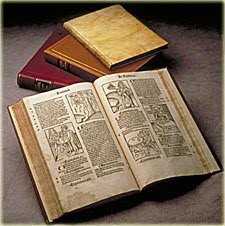


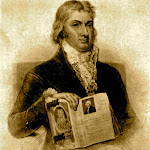




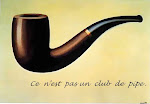



















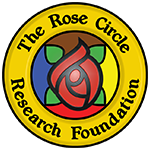

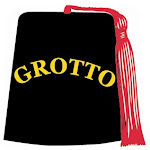









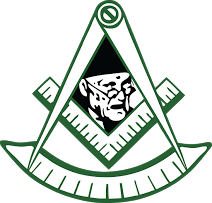




1 comment:
Hello Magpie Mason,
Although my brother and I are not Masons, we have some information about Solomon's Brazen Sea in the Old Testament we thought might be of interest to the Masons. Yours is the first Masonic site I have contacted.
My brother is somewhat of a pyramidologist, and, following Sir Isaac Newton and others (i.e., Piazzi Smyth, David Davidson), believes the sacred biblical cubit is around 25 inches. Specifically, he believes it is 1 / 10,000,000th polar radius of the earth, or about 25.0265 inches.
About 30 years ago my brother suspected that the biblical bath, the basic unit of liquid measurement in the Old Testament (O.T.), which also equals the volumetric space of the ephah, the basic unit of dry measurement in the O.T., might also equal a mole of gas (the basic unit of gaseous measurement, which follows Avogadro’s number of particles for an ideal gas at standard temperature and pressure).
Taking the cubit measurements recorded for Solomon’s Sea, and assuming the 3,000 baths represented the Sea’s fullest capacity, my brother David plugged in the 25.0265” measurement and found that it did, in fact, work out to 22.4149 liters of volumetric space. And so it appears that the biblical bath uses the same volumetric space to define the basic measuring unit for liquid, solid, and gas—the three forms of matter!
However, some have criticized the Bible for stating that pi equals 3, since it states that the diameter of Solomon’s Sea was 10 cubits, while it had a line encompassing it of 30 cubits. For many critics say this line of 30 cubits was the author’s attempt to give the brim’s circumference. But, in fact, my brother and I came to realize just this past summer that this line is apparently a latitudinal line below the rim, and actually demonstrates the golden mean! The margin of error is only 1 in 3400. The line’s purpose was apparently to divide the two rows of carved gourds which encircled the Sea, 10 to a cubit. This written description demonstrating the golden mean is the earliest we know of, and predates Pythagoras my some 300+ years.
In our opinion, the measurements of Solomon’s Sea is one proof of the accuracy of the Bible, the Creator’s word to us.
Respectfully,
Post a Comment